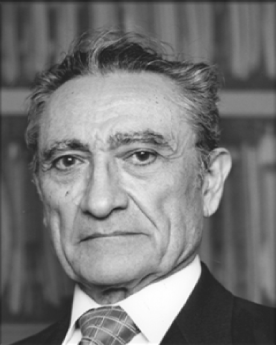 Honorary Member, FRANCE
Honorary Member, FRANCE
Professor,. Ph.D., Mathematician
Director of Research – Paris Observatory, Field of research: Solar Physics
Professional experience: 1955-1957 – Chemical Engineer at Vulcan Iron plant, Bucharest (Romania) ● 1957-1958 – Researcher at the Solar Department, Bucharest Observatory (Romania) ● 1959-1997 – Researcher at the Solar Department, Paris Observatory.
Since 1994 – Collaboration with Byurakan Observatory ● Since 1997 – Associated researcher at LESIA, Paris Observatory.
Training: 1954 – Bachelor’s Degree, Faculty of Mathematics and Physics, University of Bucharest (Romania) ● 1965 – Doctorate thesis in Physics, Sorbonne-Paris University.
Scientific fellowship: National Academy of Sciences of Armenia ● International Astronomical Union ● Société Française d’Astronomie et d’Astrophysique ● Academia Oamenilor de Ştiinţă (Academy of Scientists), Romania.
Publications between 2005–2009: Prof. Z. Mouradian published 12 papers. These papers underline three main directions in my research:
- The fine structure of solar prominences is a long-term program in collaboration with Arthur Nikoghossian from Byurakan Observatory, starting from 1994. The aim of this program is to study the fine structure of solar prominences using EUV spectral lines obtained principally by SoHO satellite. We use a statistical approach over the surface of the prominence in order to find out the parameters of spectral line profiles. These provide the thermo-dynamical structure of the threads of prominences.
– Fluctuations in the Intensity of Radiation Emerging from a Multicomponent Stochastic Atmosphere. Nikoghossian, A., Aboudarham, J. & Mouradian, Z., 2005, Astrofizica, 48, 303-313 Astrophysics, 48, 253-261.
- The solar-terrestrial relationship. Starting from my early discovery of energy impute variation of prominences, I developed a research on the influence of this property on the perturbation of the geomagnetic field.
– Dynamic Disappearance of Prominences and Their Geo-effectiveness – Taliashvilli, L., Mouradian, Z. & Páez, J., 2008, Geofisica Internacional 43 (3), 297
– Dynamic and Thermal Disappearance of Prominences and Their Geo-effectiveness – Taliashvilli, L., Mouradian, Z. & Páez, J., 2009, Solar Phys. (in press).
- The solar rotation. A new method for the study of the global rotation rate of solar activity is proposed. It uses patrol observations over 157 years. This method highlights the periodicity of about 52 years in agreement with the solar activity cycles.
– Time Variation of Global Rotation of Solar Activity – Heristchi D. & Mouradian Z., 2009, Astron. Astrophys.
Source: Armenian Journal of Physics, 2009, vol. 2, issue 1 page 77


